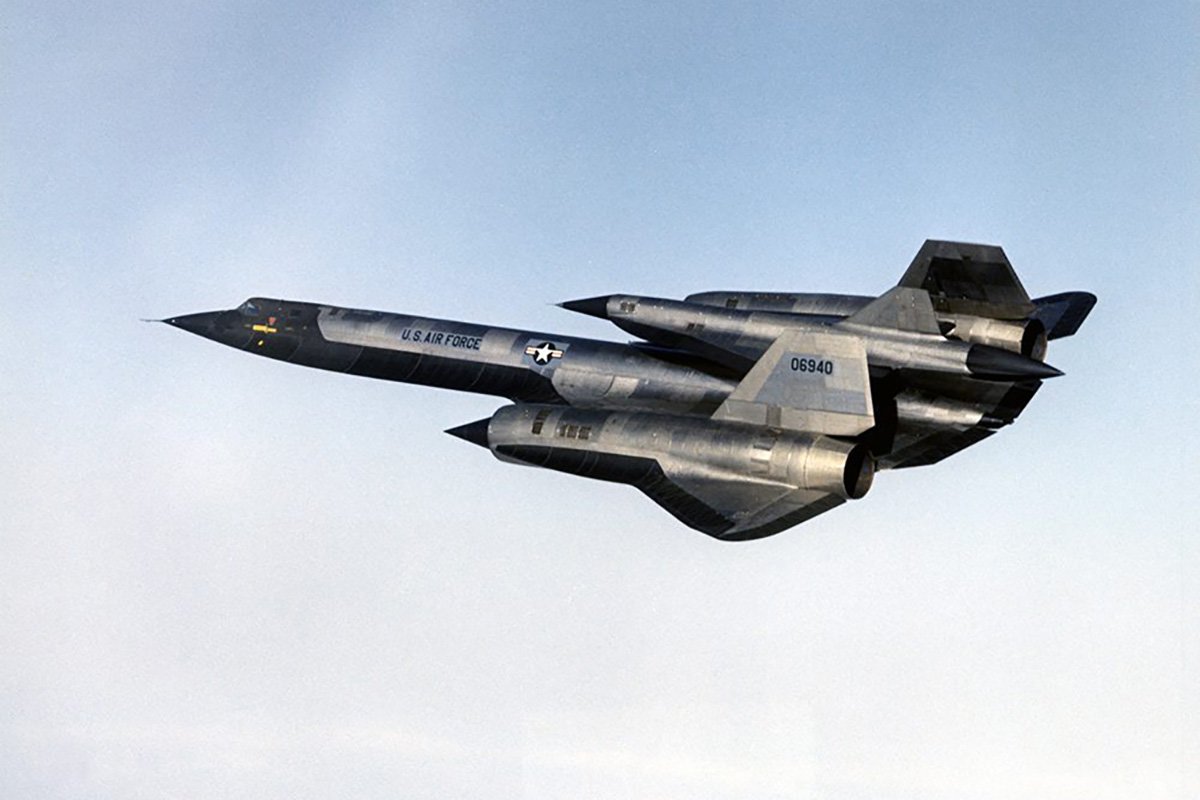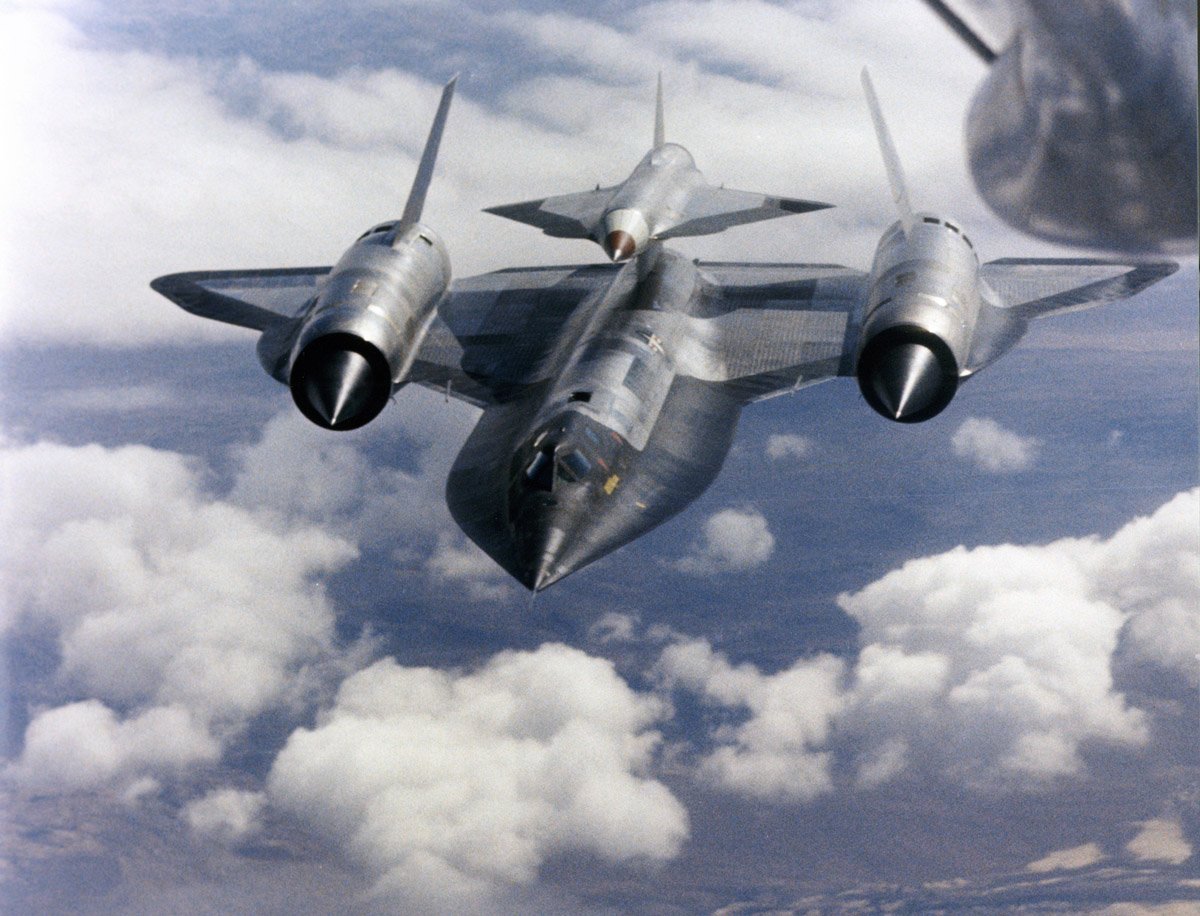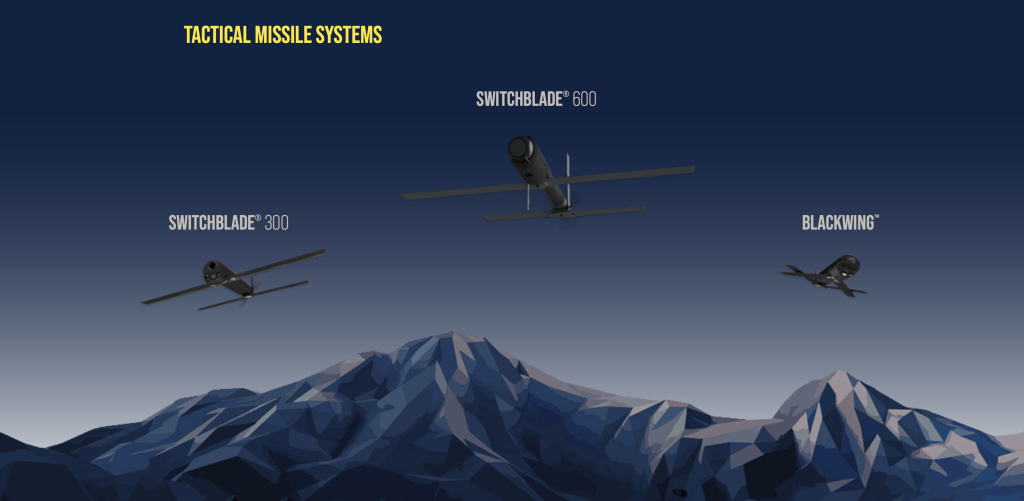5 UAVs That Have Transformed America’s Air Capabilities Since World War I

In the Cold War, Lockheed Martin’s Skunkworks Division put a UAV on top of a variation of the A-12 spy plane. Photo courtesy of Lockheed Martin.
Battlefield tactics and technologies evolve with each new war. Tools that are highly effective in one conflict may prove worthless in the next. Others endure, becoming fixtures in an army’s arsenal, and are improved over time. For the United States military, one such tool is the unmanned aerial vehicle, or UAV, iterations of which have been accompanying American troops into battle for a lot longer than many of us realize. From radio-controlled biplanes developed during World War I, to CIA insect drones used to collect intelligence from behind the Iron Curtain, to the two-in-one reconnaissance and missile platforms that came to feature prominently in the War on Terror, UAVs have played an integral role in American combat and spy missions since the dawn of modern warfare. The five UAVs described below tell that fascinating, and often underappreciated, history.
The Kettering Bug

The Kettering Aerial Torpedo was the brainchild of inventor Charles F. Kettering. Toward the end of World War I, Kettering built a so-called flying bomb at the request of the US Army, which wanted an aircraft that was pilotless. Also known as the Kettering Bug, this primitive UAV looked similar to a normal biplane except with a propeller, fixed wings, and four wheels to provide stability while on the ground.
The Kettering Bug launched from a four-wheeled dolly along a portable track. Its internal system had preset electrical controls that helped the UAV guide its way to the target. “After a predetermined length of time, a control closed an electrical circuit, which shut off the engine,” the National Museum of the US Air Force states on its website. “The wings were released, causing the Bug to plunge to earth — where its 180 pounds of explosive detonated on impact.” Though the Kettering Bug never saw combat — fewer than 50 models were made before the Armistice of 1918 — it served as the inspiration for American UAVs that were later developed during World War II.
D-21 Supersonic Drone

During the Cold War, the legendary Skunkworks Division, responsible for developing some of Lockheed Martin’s most innovative aircraft, developed the D-21 (Daughter) supersonic drone. These unmanned drones were designed to hitch a ride on top of a variation of the manned A-12 spy planes, similar to how space shuttles attach to 747 airliners. According to Lockheed Martin’s website, the D-21 could fly faster than a bullet, often exceeding speeds of Mach 3.3 and at an altitude of between 87,000 feet and 95,000 feet. The D-21 had a range of 3,000 nautical miles, and rather than being remotely piloted, the drone could be preprogrammed with a specific flight path once launched from the spy plane. When the drone finished its reconnaissance mission over hostile territory, it returned to friendly airspace and released its film canisters, which were then scooped up by a passing C-130. The drone had a self-destruct function that was activated after it unloaded the canisters. Modifications were made between 1966 and 1971, but the D-21 was retired soon after.
CIA’s Insectothopter
In the 1970s, the CIA attempted to solve a long-standing problem with a tiny, insect-inspired gadget called the insectothopter. The insectothopter was a miniature UAV designed to resemble a dragonfly. In World War I, the US military strapped cameras to pigeons to gather photographic surveillance of hostile positions. But the poor quality of the images made it difficult to locate the enemy against the backdrop of the photographed terrain. Decades later, the CIA began to develop a modern solution to this problem so that its agents could use UAVs to covertly capture accurate imagery that could be easily deciphered and turned into actionable intelligence.
Keith Melton, a founding board member of the International Spy Museum, explained in the museum’s 2020 video presentation how the CIA looked toward nature for inspiration in its miniature aerial surveillance technology. The CIA’s Research and Development Office then studied the best flight characteristics of insects, including the dragonfly. Dragonflies had a stable 3-inch wingspan, could fly in various weather conditions, and had the strength to be outfitted with a sensor package. The prototype weighed only 1 gram and could fly a few hundred yards in 60 seconds of flight time. Early experiments showed promise, but in the end, the CIA discovered the insectothopter became unstable in flight when passing through crosswinds; thus, the micro-UAV never flew an operational mission. It did, however, inspire generations of micro-drones, which have been deployed abundantly in the War on Terror.
Lockheed Martin RQ-170 Sentinel

Lockheed Martin’s Skunkworks Division was eventually tasked with another classified project to meet the US military’s evolving demands for UAV capabilities. Thus it developed the RQ-170 Sentinel, which is similar in appearance to a B-2 bomber but much smaller. With only a 14-meter wingspan, the RQ-170 Sentinel can fly up to 50,000 feet in altitude and provides real-time intelligence to operators from the 432nd Wing of Air Combat Command at Creech Air Force Base, Nevada, as well as the 30th Reconnaissance Squadron at Tonopah Test Range, Nevada.
The RQ-170’s first publicly acknowledged mission was launched from Kandahar Airfield, Afghanistan, in 2007. Soon afterward, the UAV gained the famous nickname “the Beast of Kandahar.” The RQ-170 has also been flown over North Korea and was reportedly used in the 2011 Bin Laden raid in Abbottabad, Pakistan. The real-time feed allowed President Barack Obama and his staff to watch the assault as it was unfolding. In December of that same year, the Iranian military managed to hijack an RQ-170 while it was in flight and then reverse-engineered it and developed a version of the aircraft for its own UAV fleet. Yikes!
Switchblade Drones

Switchblade tactical systems are a two-in-one package. Developed in the 2000s by AeroVironment and entering service in 2011, these Switchblade devices are the premier Lethal Miniature Aerial Missile System in the US Army’s arsenal. A lone operator can set up a self-contained tube launcher — a smaller, more compact version of a mortar tube — in less than 10 minutes and launch one of two models of the Switchblade into a hostile area. Once at an altitude somewhere between 500 and 650 feet above the ground, the drone has the endurance to loiter on station between 15 minutes and 40 minutes, or more, depending on the model, and uses ISR capabilities to provide operators with real-time surveillance. If the ground operator decides to strike a target — a vehicle, for example, or an object or person through a window — the Switchblade can deliver precision strikes with minimal collateral damage.
There are currently two models of these drones: Switchblade 300 and Switchblade 600. Switchblade 300, the smaller model, weighs just 5.5 pounds, can fit in a backpack, and is designed for anti-personnel use, while the Switchblade 600 is much larger, weighing about 50 pounds, and carries a warhead that can destroy tanks. In 2022, the United States supplied approximately 100 Switchblade drones to Ukraine, where the Switchblade 600s in particular have since come to be known as the “kamikaze drones.”
Read Next: Special Operators Break Down the Switchblade Drones Headed to Ukraine

Matt Fratus is a history staff writer for Coffee or Die. He prides himself on uncovering the most fascinating tales of history by sharing them through any means of engaging storytelling. He writes for his micro-blog @LateNightHistory on Instagram, where he shares the story behind the image. He is also the host of the Late Night History podcast. When not writing about history, Matt enjoys volunteering for One More Wave and rooting for Boston sports teams.
BRCC and Bad Moon Print Press team up for an exclusive, limited-edition T-shirt design!
BRCC partners with Team Room Design for an exclusive T-shirt release!
Thirty Seconds Out has partnered with BRCC for an exclusive shirt design invoking the God of Winter.
Lucas O'Hara of Grizzly Forge has teamed up with BRCC for a badass, exclusive Shirt Club T-shirt design featuring his most popular knife and tiomahawk.
Coffee or Die sits down with one of the graphic designers behind Black Rifle Coffee's signature look and vibe.
Biden will award the Medal of Honor to a Vietnam War Army helicopter pilot who risked his life to save a reconnaissance team from almost certain death.
Ever wonder how much Jack Mandaville would f*ck sh*t up if he went back in time? The American Revolution didn't even see him coming.
A nearly 200-year-old West Point time capsule that at first appeared to yield little more than dust contains hidden treasure, the US Military Academy said.












